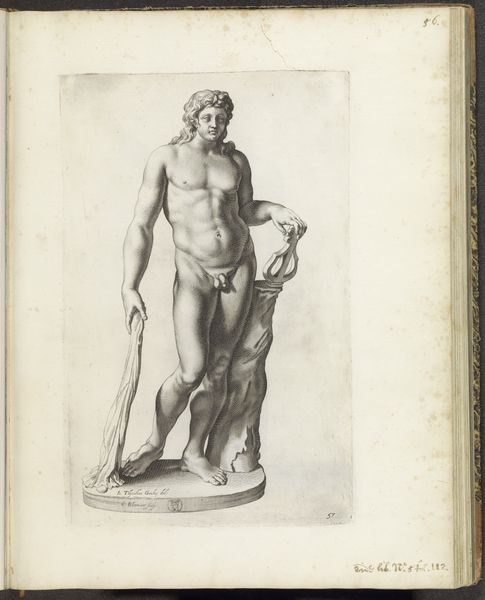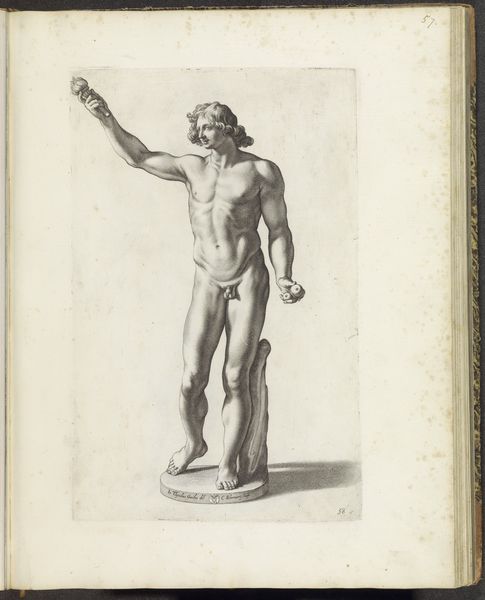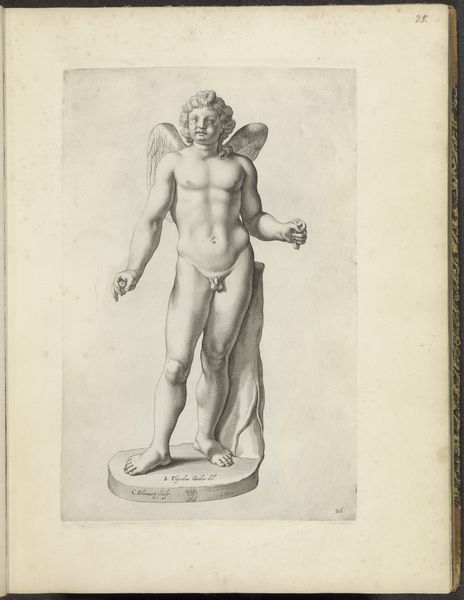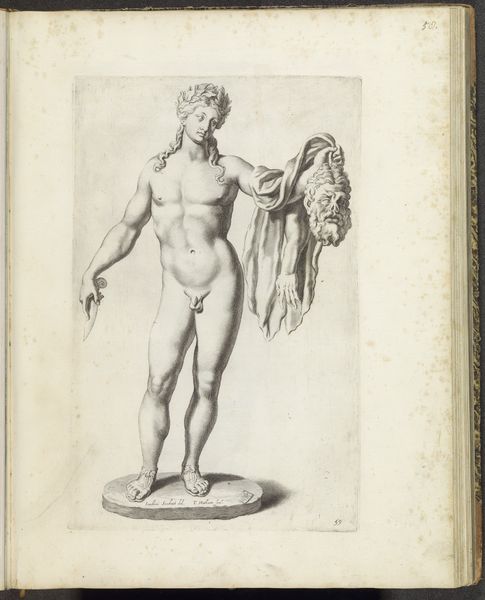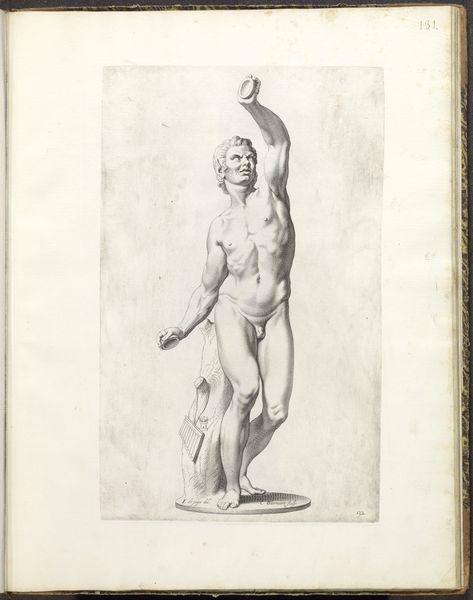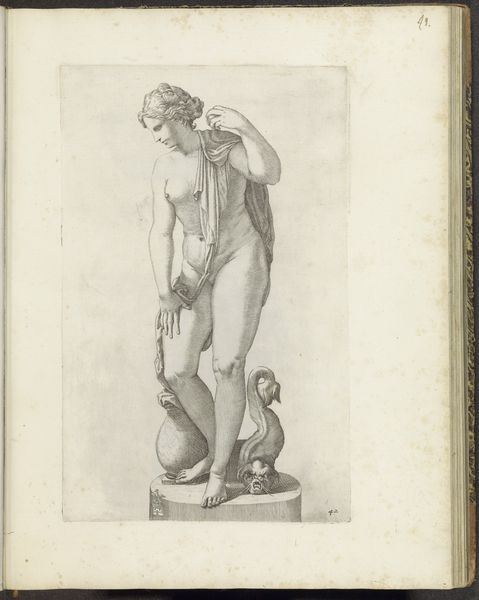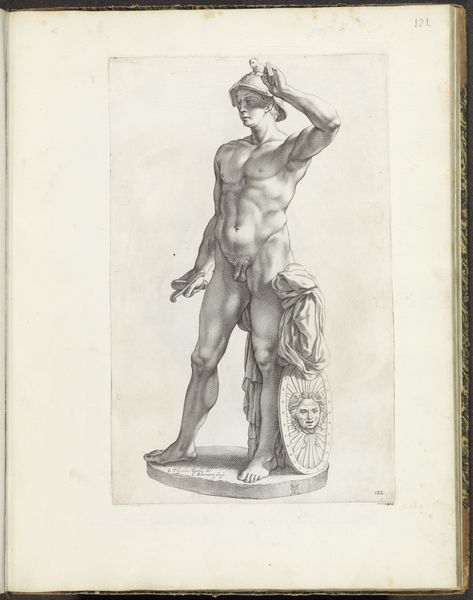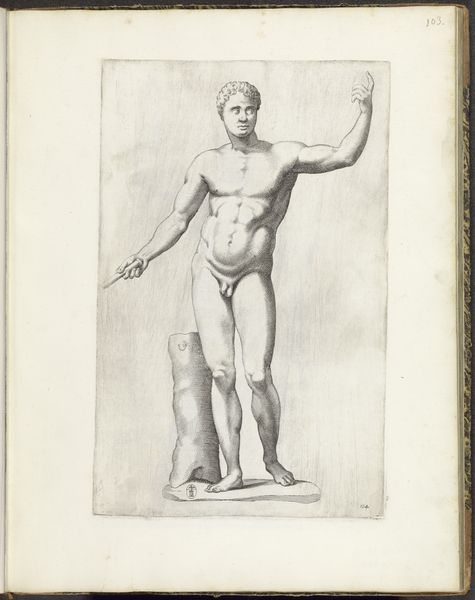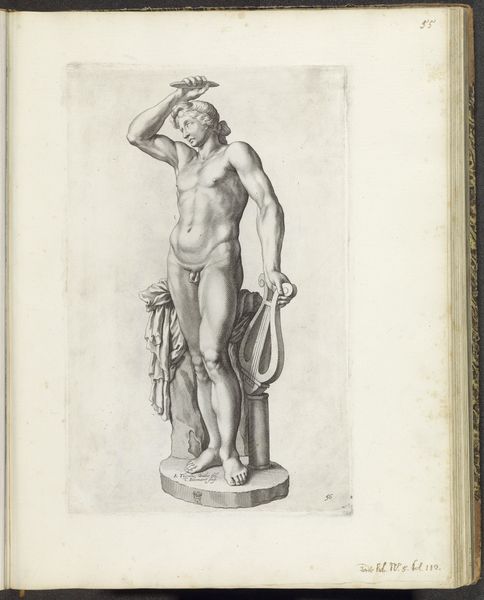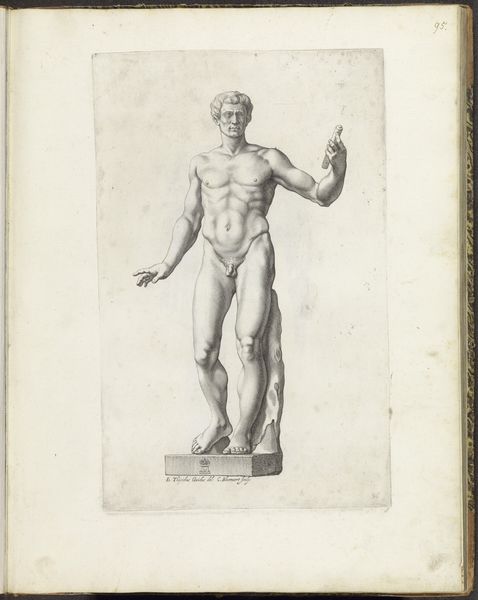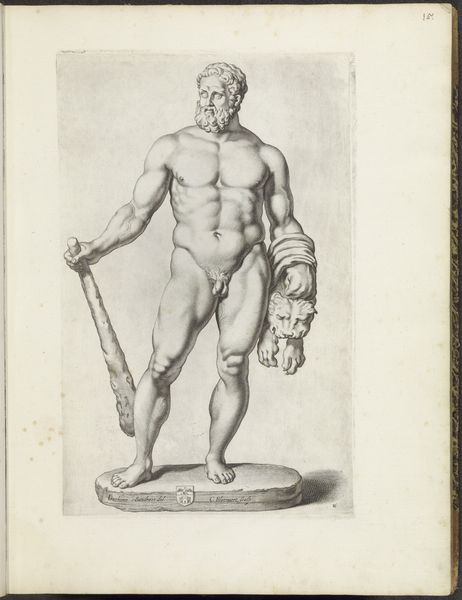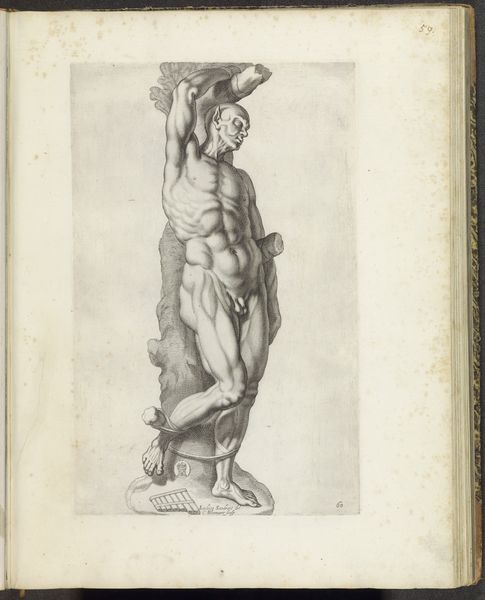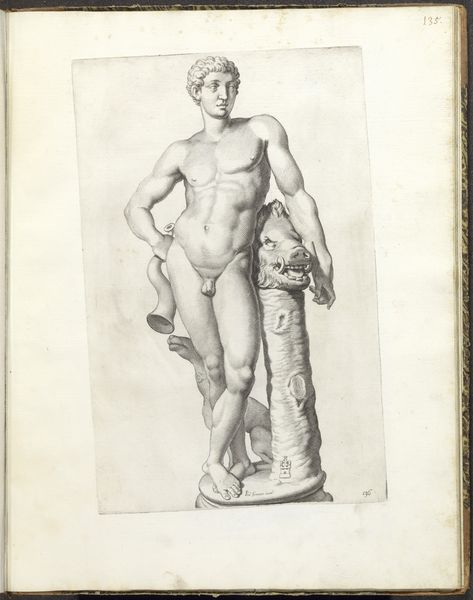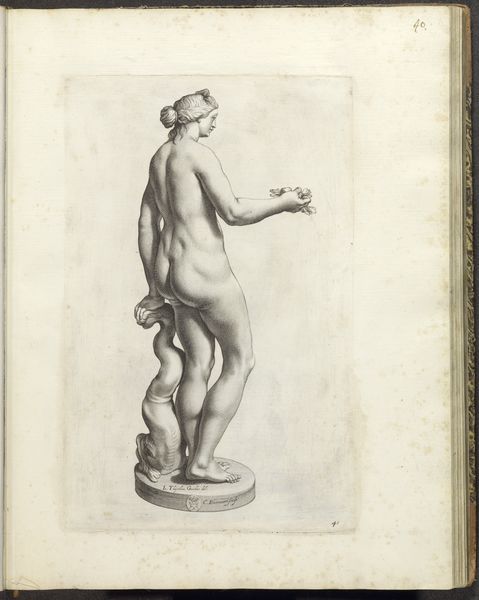
drawing, ink, pen
#
portrait
#
drawing
#
baroque
#
pencil sketch
#
classical-realism
#
figuration
#
11_renaissance
#
ink
#
pen-ink sketch
#
pen
#
history-painting
#
academic-art
#
nude
Dimensions: height 375 mm, width 235 mm
Copyright: Rijks Museum: Open Domain
Curator: This is "Statue of Bacchus with Tiger" by Giovanni Luigi Valesio, made between 1636 and 1647. It appears to be a pen and ink drawing, quite detailed. What are your initial thoughts? Editor: My first impression is cool classicism. Bacchus holding grapes aloft, wreathed in vines...but rendered with a surprising reserve. The greyscale and rather precise hatching keeps it from feeling truly sensual. Curator: I find the hatching particularly compelling. The use of pen and ink allowed for a linear precision, prioritizing form and contour over tonal depth. Look closely; the control over the medium speaks to the artist's training, likely within an academic environment heavily influenced by classical ideals. The material choices were also critical; pen and ink enabled efficient reproduction, crucial for disseminating knowledge during this period. Editor: Absolutely. We must consider the dissemination of this imagery within the print culture of 17th-century Europe. The baroque style was politically charged, frequently used to legitimize power through dramatic displays. Yet, here, Bacchus lacks the exuberance often associated with the period. Why present such a controlled, almost clinical version of a deity usually synonymous with ecstatic abandon? Was Valesio subtly commenting on the excesses of the era, perhaps reflecting the anxieties brewing beneath the surface of royal patronage? Curator: It's interesting to think of the artist's studio and workshop; I mean, this piece feels somewhat detached from the visceral, material realities of its time. Consider the tiger, for example; its realistic depiction clashes with the idealized, smooth surface of Bacchus' body. Editor: I wonder if this disparity suggests a visual hierarchy, where classical form is privileged above the "natural," thus echoing a broader cultural project of refinement that permeated the period. Curator: This makes sense. I mean, this work serves both aesthetic and didactic roles and reflects the means of its making and the priorities that came with it. Editor: Agreed, looking at the history of the image’s function within a politically-minded social frame unlocks a lot of interpretative doors here. Thanks!
Comments
No comments
Be the first to comment and join the conversation on the ultimate creative platform.
